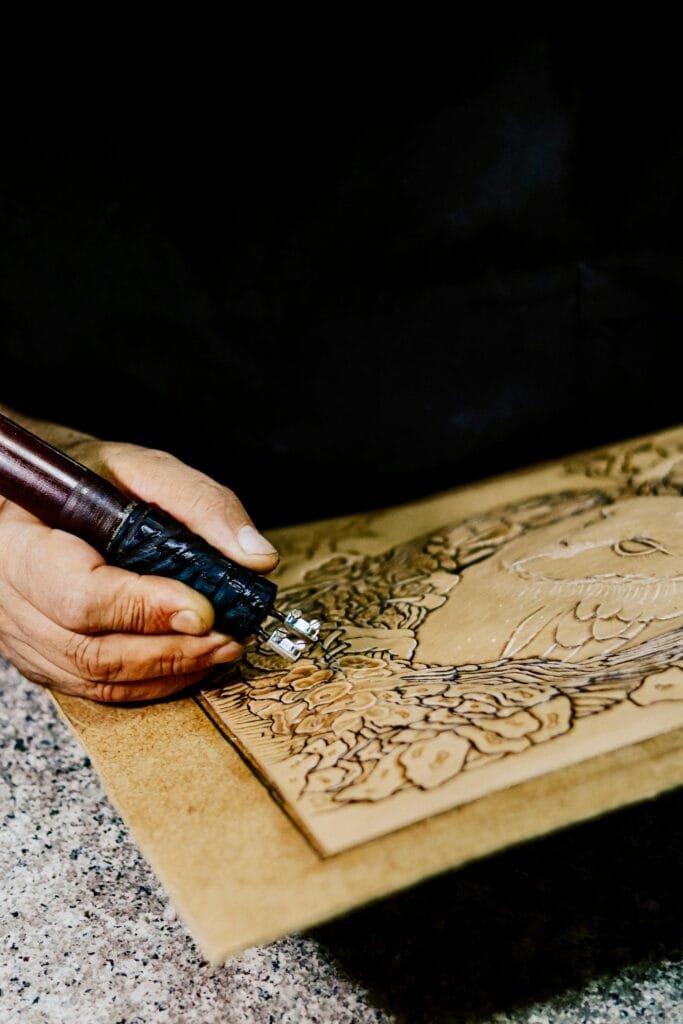Engraving has long been a way to add both artistry and identity to an object — whether for a brand, a commemorative item, or a personalized gift. In the modern world of signs wollongong, engraving continues to be one of the most versatile and impactful techniques used to create lasting impressions. From intricate jewelry to bold business signage, choosing the right engraving material makes all the difference in durability, appearance, and overall quality.
Let’s explore the most popular materials used for engraving today, what makes each one special, and how to decide which suits your project best.

1. Metal Engraving
Metal is one of the oldest and most durable materials for engraving. Its strength and shine make it ideal for both decorative and industrial applications. Common metals used include aluminum, brass, copper, stainless steel, and titanium.
Why it’s popular:
Metal engraving produces clean, precise results and can withstand extreme environments. It’s ideal for machine plates, name tags, jewelry, signage, and awards. Techniques like laser engraving and rotary cutting can etch text, logos, or intricate patterns with exceptional detail.
Best uses:
- Industrial and mechanical parts
- Custom jewelry and accessories
- Nameplates and plaques
- Outdoor signage
For outdoor applications, metals with protective coatings or powder finishes can resist corrosion and UV damage, ensuring your design remains as bold as the day it was made.
2. Wood Engraving
Wood offers a timeless and organic appeal. It’s warm, tactile, and visually distinct, which makes it perfect for projects that call for a handcrafted or rustic aesthetic.
Why it’s popular:
Laser engraving burns the wood’s surface to create dark, detailed impressions. The natural grain of each piece adds character, making every engraving unique. Different woods like oak, maple, cherry, and walnut produce varying tones and textures.
Best uses:
- Custom signage
- Awards and commemorative plaques
- Personalized gifts
- Decorative wall art
Wood engraving is both eco-friendly and versatile, lending itself equally well to small, sentimental projects and large-scale signage.
3. Glass Engraving
Glass engraving adds elegance and sophistication to any item. Whether it’s a decorative vase, award, or window panel, engraved glass reflects light beautifully, creating a striking effect.
Why it’s popular:
Laser and sandblasting techniques are the most common methods used on glass. They allow for high precision and depth, creating frosted textures or clear etchings that stand out without compromising the material’s integrity.
Best uses:
- Awards and trophies
- Drinkware and barware
- Windows and decorative panels
- Commemorative gifts
When combined with lighting, engraved glass designs can create dazzling visual displays, making it a favorite for upscale signage and corporate recognition pieces.
4. Leather Engraving
Leather engraving offers a premium, tactile finish that appeals to both modern and traditional styles. Whether it’s a branded keychain, journal cover, or corporate gift, engraved leather exudes craftsmanship and luxury.
Why it’s popular:
Laser engraving slightly burns the leather surface, producing dark, rich contrasts. This method works beautifully on both genuine and synthetic leathers, depending on the desired finish.
Best uses:
- Wallets, belts, and accessories
- Custom notebooks and portfolios
- Promotional merchandise
- Decorative signage
Because leather is soft and flexible, engraving requires precision and experience to avoid overburning. When done correctly, the result is a timeless, professional look that enhances brand identity.
5. Acrylic and Plastic Engraving
Acrylic and plastics have become increasingly popular alternatives for engraving, especially in signage and display design. These materials mimic the appearance of glass but are more durable and lightweight.
Why it’s popular:
Laser engraving on acrylic produces crisp, white marks that stand out clearly. It’s an excellent choice for illuminated or backlit signs, awards, and nameplates.
Best uses:
- Modern business signage
- Awards and certificates
- Promotional displays
- Retail branding
Acrylic is also weather-resistant, making it ideal for both indoor and outdoor use. When paired with LED lighting, it delivers a polished, contemporary aesthetic that rivals traditional materials.
6. Stone Engraving
For projects that demand permanence, stone is unmatched. Granite, marble, and slate are commonly used for monuments, plaques, and architectural features.
Why it’s popular:
Laser and mechanical engraving methods can carve detailed inscriptions and artwork into stone, providing a sense of dignity and longevity.
Best uses:
- Memorials and monuments
- Building plaques
- Outdoor signage
- Artistic installations
Stone engraving requires specialized tools and experience, but the results are remarkably enduring and visually powerful.
Final Thoughts
The choice of engraving material depends on your intended use, aesthetic preference, and durability needs. Metal and stone offer strength and resilience; wood and leather add warmth and texture, while glass and acrylic bring elegance and light. Each material has its own personality — and when paired with expert craftsmanship, the result can transform a simple object into something truly extraordinary.
For businesses and artisans in signs wollongong, engraving remains a powerful way to merge design and durability. Whether for branding, personalization, or creative expression, engraved materials ensure your message stands the test of time.
